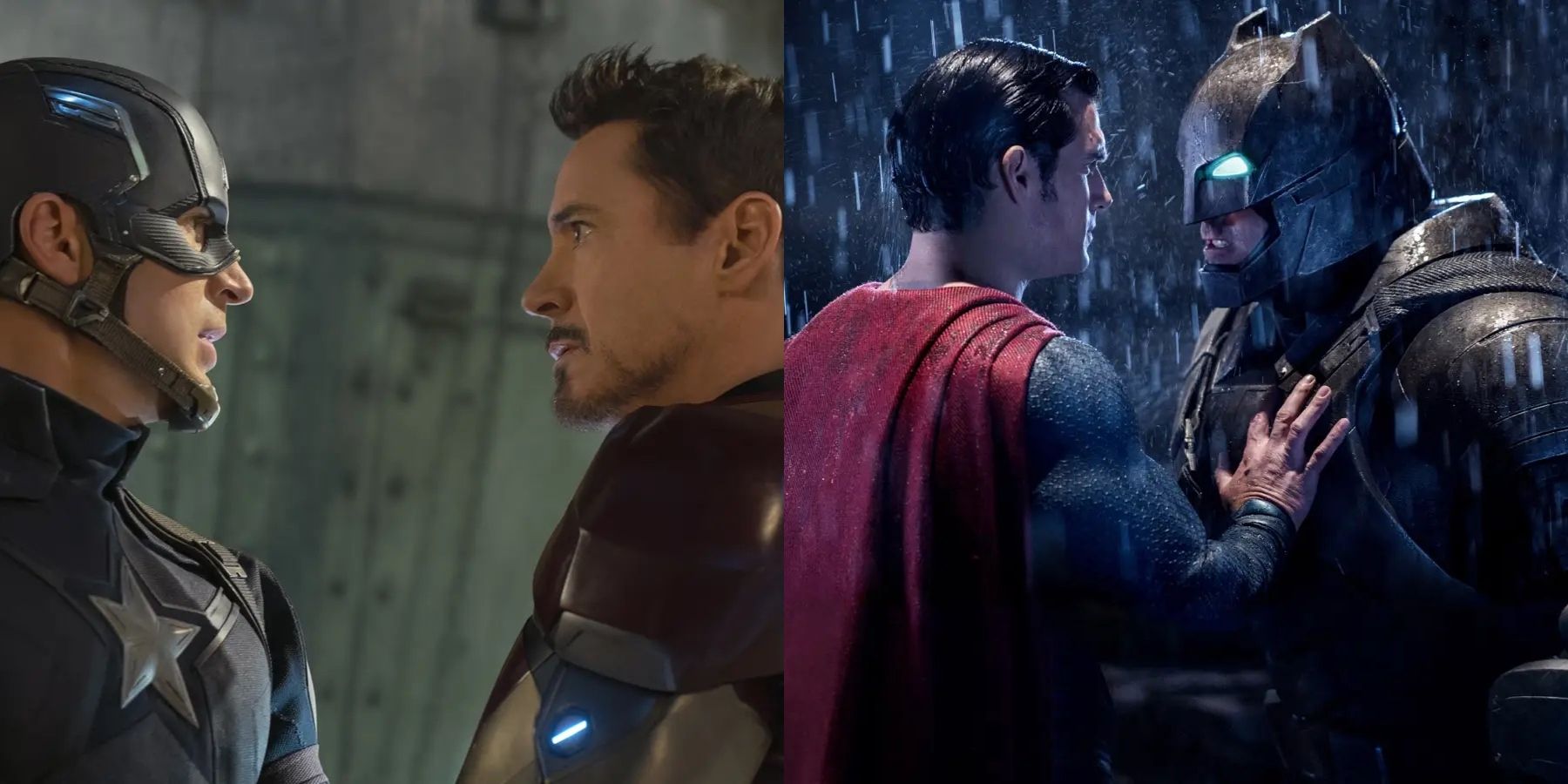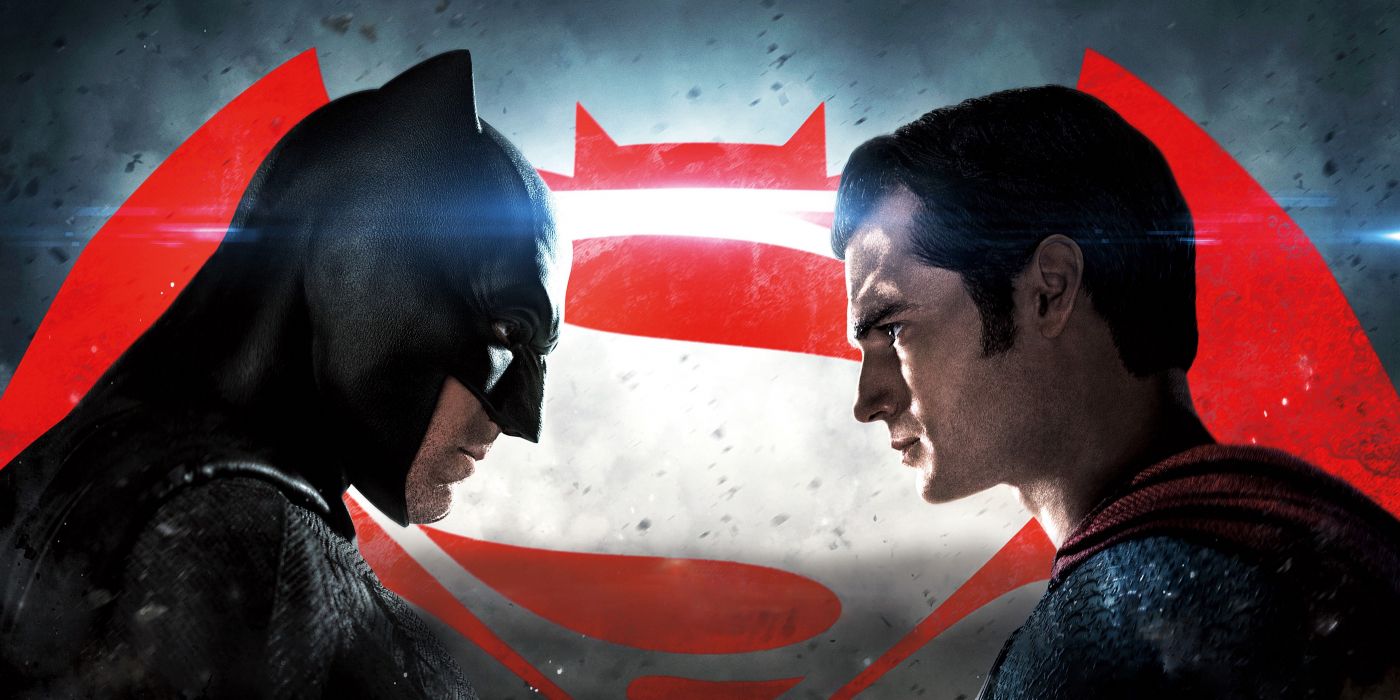In 2016, Captain America: Civil War and Batman v Superman: Dawn of Justice were superhero films in which heroes went against each other due to disagreements on how to keep human civilization safe. In Civil War, Tony Stark/Iron Man believes that the Sokovia Accords will control the Avengers and their every move in order to prevent damage towards innocent civilians, while Steve Rogers/Captain America doesn't buy into the idea that a set of rules will define the Avengers and the missions they take on.
In Dawn of Justice, Bruce Wayne/Batman is convinced Superman will become an inevitable threat to humanity after the attack on Metropolis in Man of Steel, while Clark Kent/Superman disagrees with Batman's vigilantism and brutal tactics towards taking down criminals. Both films show the disputes concerning human safety and how justice should be conducted, but Civil War is more effective than Dawn of Justice in terms of the depth of the characters.
Civil War comes off fresh after the events of Avengers: Age of Ultron, in which Earth's mightiest heroes defeat Ultron and his army of machines, but leave Sokovia in ruin, as well as numerous casualties, including the family of Civil War villain Helmut Zemo, who ends up building a devious plan to have the Avengers take each other down. Zemo starts by framing Bucky Barnes/The Winter Soldier for the bombing in Vienna (where the Accords were to be confirmed), which causes the death of T'Chaka (T'Challa/Black Panther's father). This places Steve in a difficult position because he knows Bucky was brainwashed by Hydra, but T'Challa, and the Avengers on Stark's side who agree with the Accords, want Barnes brought in since he's the prime suspect.
Dawn of Justice begins by introducing Ben Affleck's slightly older Bruce Wayne/Batman, who enters the middle of the attack on Metropolis, which was the climactic battle shown in Man of Steel. Bruce, without his alter ego and bat suit, drives around as he sees buildings getting destroyed and several people trying to escape the destruction. He manages to save a little girl, whose mother was killed in one of the destroyed buildings, along with one of Bruce's colleagues, while another colleague of Wayne's lost his legs. Bruce sees Superman and General Zod fight each other in the sky, and is convinced that the Man of Steel is an existential threat to humanity because of the mayhem ensued on the people of Metropolis.
While both Civil War and Dawn of Justice are effective in displaying the conflict between superheroes and their opposing methods in terms of saving lives and fighting for justice, Civil War is the strongest link out of the two films because of the characters' depth and history. Before Civil War, Iron Man and Captain America, as well as Black Widow, Hawkeye, and several other superheroes have already established their roles in previous Marvel Cinematic Universe (MCU) films. Most of the Marvel heroes have been through individual battles, and have worked as a team to defeat strong enemies.
By contrast, while there have been other portrayals of Batman and Superman in the past, and their backstories were given in previous films, this is only Henry Cavill’s second portrayal of the Man of Steel, and the first time Affleck is playing the caped crusading billionaire. Seeing both characters together for the first time is a treat for fans of the heroes, but there isn’t much insight into the actual identities of Bruce Wayne and Clark Kent in this film.
Kent isn’t shown doing much work as a journalist considering his suspicions toward Batman, and Wayne is simply spying on Luthor as himself in order to find the kryptonite to kill Superman. Batman's investigative skills are also questionable because he could have investigated more on Superman and his secret identity, rather than rush into judgment and claim that the Man of Steel is a global enemy who only wants to cause chaos.
The other heroes in Dawn of Justice, such as Wonder Woman and Flash, are only briefly shown and aren’t as crucial in the film’s plot. Whereas, in Civil War, all of the characters' complex moral issues are displayed. Stark and Steve are teammates and friends who want to help each other and come to a compromise on how to protect the world.
However, as a wealthy philanthropist and super-soldier, respectively, both Avengers have different mindsets. There are also fresh characters, such as Wanda Maximoff/Scarlet Witch (who was in Age of Ultron), Ant-Man, and newcomers Black Panther and Tom Holland’s Spider-Man, who have smaller but more impressionable moments that signify their strengths and weaknesses.
Both films prove that while superheroes can take down major enemies, they won’t always be appreciated because there are always casualties and destruction of property left behind. Scarlet Witch saves Captain America at the beginning of Civil War by defeating Brock Rumlow, smashing him into a building, which, unknown to Wanda, had civilians inside. This shows Wanda's powerful abilities, but also her inexperience as a crime fighting Avenger. Her interactions with Vision and Hawkeye also show the basis of Wanda's conflict because Vision wants her to be protected and lay low, while Hawkeye believes she should willingly fight for her cause. Along with Wanda, Vision also suffers consequences when he accidentally shoots James Rhodes/War Machine while pursuing Sam Wilson/Falcon.
Superman's history of saving people but leaving mass destruction was shown more in Man of Steel, whereas Dawn of Justice displays a few moments of helping people in peril, a couple of fighting showdowns, and Superman constantly saving Lois Lane. Another significant difference between Civil War and Dawn of Justice is that the latter takes itself too seriously at times and only juggles with a couple of heroes, while the former effectively blends intense action and drama with some funny moments as several heroes critique each other's powers.
Lex Luthor's egotistical motivation to pit Batman and Superman against each other is also not fully explored, or perhaps he just intends on being superior to powerful figures. However, Zemo's quest for vengeance against the Avengers is more justified and motivated because he lost his family as a result of their actions, and is clever and calculated in having the heroes cross each other, especially causing Iron Man's dispute with Cap and Bucky over his parents' murder.
Egoism is also a major theme behind these films and the characters' motivations, who aren't much for authority. Batman and Iron Man firmly believe they are right and usually ignore what other people think. Both of these rich and arrogant superheroes also suffer from trauma and painful memories due to the deaths of their parents. Captain America and Superman, while viewed as patriotic figures, believe that heroes should make their own path when it comes to seeking justice the right way, without supervision, while Batman and Iron Man have their specific codes and/or rules to follow.
Civil War and Dawn of Justice are proof that the MCU and DC Universe both need more films in which superheroes go against one another because they show how heroes can be on opposing sides due to differing ideologies. These conflicts and indifferences also show how heroes can rebuild and unify afterwards, as shown when several of the Avengers come together to fight Thanos in Endgame, and the resurrection of Superman to join the Justice League in taking down Steppenwolf. It's when heroes are shown at their most vulnerable where their strengths and weaknesses are revealed. If James Gunn is serious about making a film that combines Marvel and DC characters, a civil war storm is truly coming.



